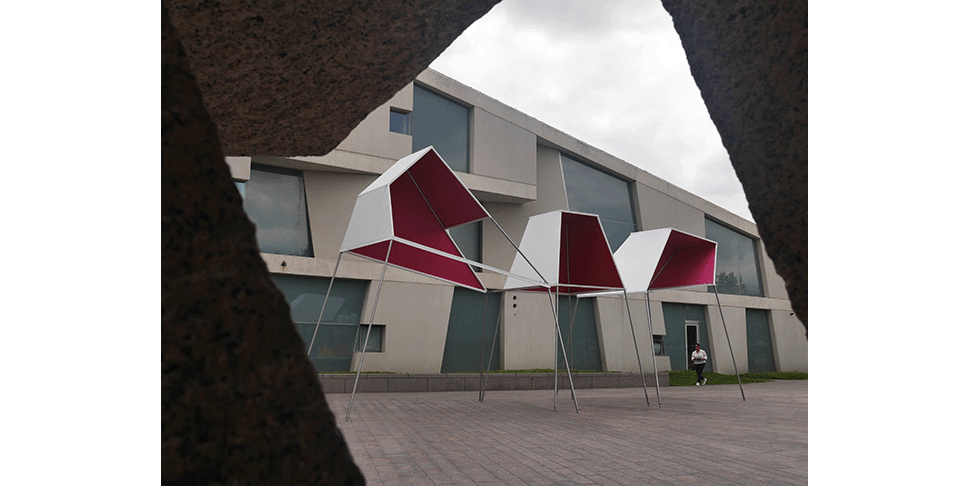The etching by Marc-Antoine Laugier in 1753 depicted the Primitive Hut, as a pavilion, which has sparked an architectural dialogue that still resonates today. A large, urban museum commissioned a mobile gallery that could extend its boundaries by untethering itself from the museum’s main campus and traditional readings of architecture. The NON_Pavilion explores the boundary between the permanent and the nomadic, by forging a new territory with contemporary “pop-up” architecture that questions the roots of architecture being a permanent building.
The experimental NON_Pavilion is a satellite that moves around the city gathering community support, critiques, and creating new definitions of ‘what is art’. Born as a space for collecting stories, the pavilion instigates conversations about art, the perceptions of the community, the role of creativity and the redefinition of the institution itself in the diverse and deeply cultural fabric of the city. The pavilion serves as an object of inquiry, as well as a performative structure in service of the museum’s outreach mission.
The three pavilions establish a family: The truncated, pyramidal shapes evolved from the jagged geometries of the campus’s new expansion, as well as the concrete sculptural walls of the adjacent garden by Isamu Noguchi. These contextual forms, translated into fabric and the lightness of a deployable frame, can be individually erected, or collectively aggregated as needed for an event, or a site. The NON_Pavilion by its very nature encompasses an object, a building, and an experience, and by extension, can include: the augmented and virtual worlds, through the use of light, form, and material that can straddle the world of art and architecture.
|
|
